Armeria: description, planting and care
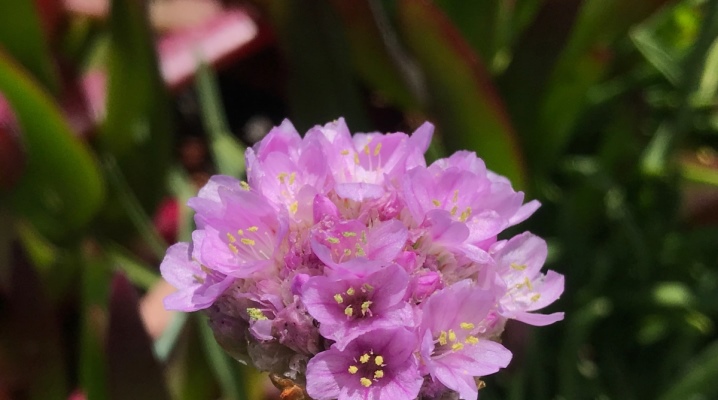
For landscape design, you can use various ornamental plants, among which armeria deserves special attention. This flower is distinguished by its unusual brightness, which makes it possible to use it when creating rock gardens, mixborders and rocky compositions. Since this type of plant is unpretentious to care for, it can be easily grown even by novice gardeners.
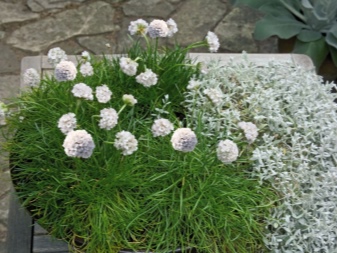
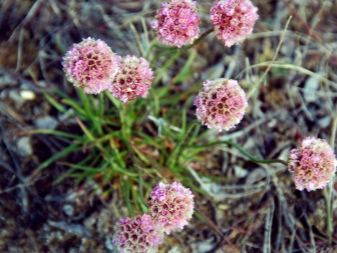
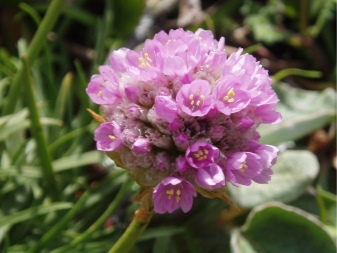
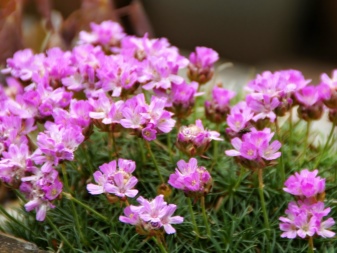
Peculiarities
Armeria is considered a herb that belongs to the Lead family. The name of this perennial comes from two words - "mor" (sea) and "ar" (near). This is because this flower prefers to grow in coastal areas. The perennial crop is most commonly found in Mongolia, Siberia, South America and Eastern Europe. It is a small shrub with an erect stem that reaches a height of 15 to 60 cm. This herb has a taproot short root system.
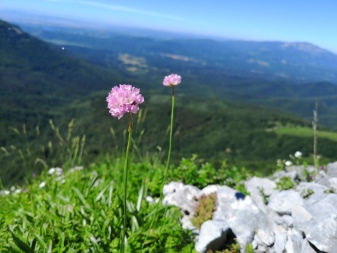
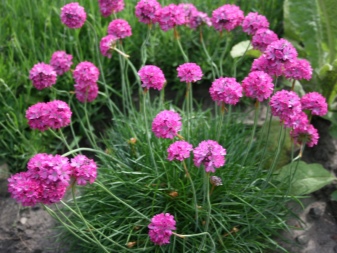

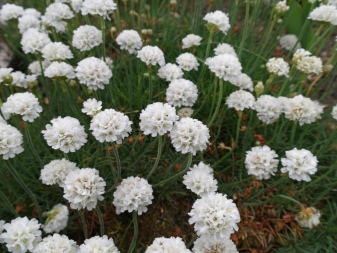
Armeria is represented by several species, each of which has its own description. The main feature of the culture is that its stem is covered with many leaf plates of a linear-lanceolate shape, all of them are collected in a basal rosette. In this case, the stem can be either smooth or pubescent. During the flowering period, small buds appear on the shrub, consisting of capitate inflorescences. They can be painted in snow-white, pale pink or purple shades.
This ornamental plant is recommended to be planted next to water bodies, decorating flower beds. It is also used for landscaping gardens. The flower can be grown in countries with temperate climates, as it multiplies easily and tolerates winter well. Caring for this plant is pretty simple.
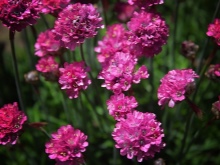


Varieties
Today, there are more than 90 types of armeria, of which 10 are to be cultivated at home. The most popular are several varieties of the plant.
- Alpina (alpine). It is a perennial that usually grows up to 15 cm in height. It looks like a shrub covered with foliage of a linear-lanceolate shape. The leaves have the ability to survive on the bush even in winter.
During the flowering period, white or pink flowers bloom on the armeria. The most famous varieties of this type of armeria: Rosea, Laucheana and Alba.

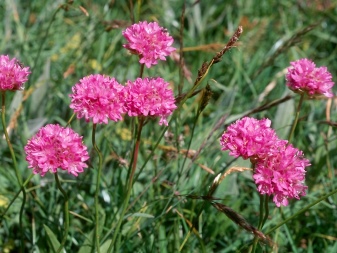
- Pseudarmeria (pseudo-army). It is a beautiful shrub up to 0.4 m high. Its leaf plates grow from basal rosettes. False armeria blooms with pink or white flowers. Its most common varieties include such as Red Planet, Joystick White.
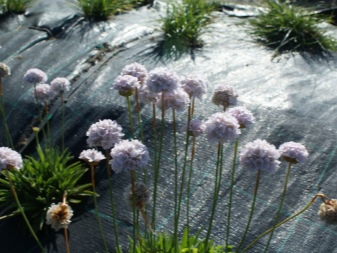
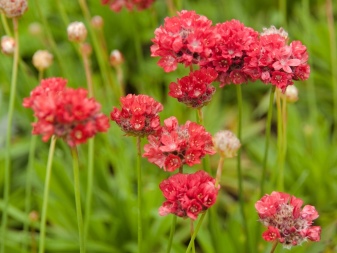
- Maritima (seaside). Usually, this perennial is found in nature on the sea coasts. This armeria grows no more than 20 cm in height, and its root rosette is up to 20 cm in diameter. The flowers are pink in color, the buds bloom on capitate inflorescences. Cultivated varieties include Louisiana, Vindictive and Düsseldorf Stolz.
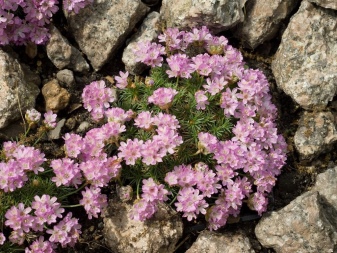
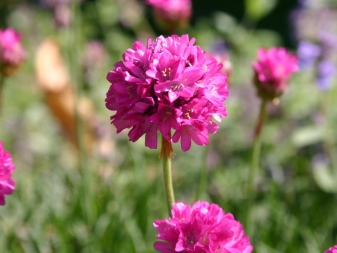
- Juniperifolia, Cespitosa (turf or juniper). It is a compact ornamental plant no more than 15 cm high, its leaves are linear and narrow. This armeria can be either red or pink, its capitate inflorescences have a characteristic framing. Like all other plant species, sod armeria is characterized by abundant flowering.For cultivation in suburban areas, the following varieties are recommended: "Brno", "Beavans Variety", "Zyundermana".
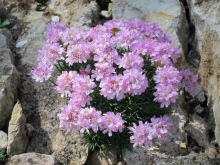
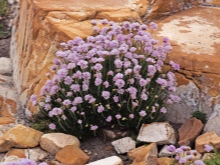
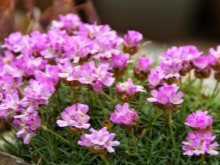
- Armeria vulgaris (common armeria). This type of armeria can grow up to 60 cm in height.Its leaf plates reach 12.5 cm in length and 1 cm in width. During flowering, flowers (there may be up to 40 of them) bloom on the bush of carmine-pink color, they have a pleasant fragrant aroma.
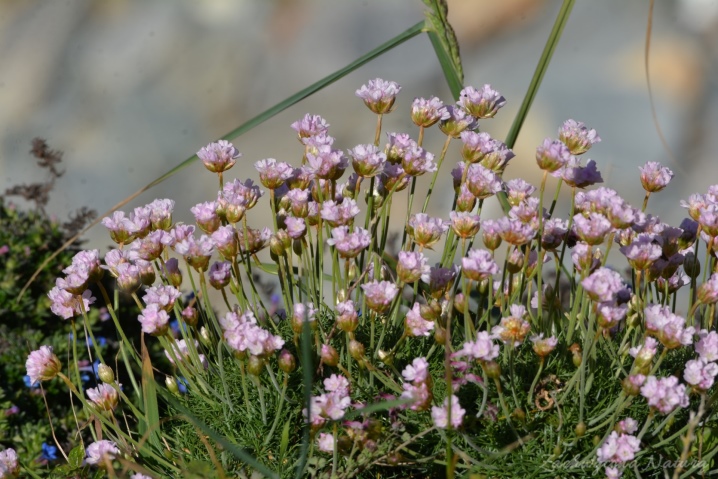
- Armeria formosa (beautiful armeria). Differs in compact rosettes, which consist of many narrow-linear evergreen plates. This is the most beautiful armeria, since during the period of exuberant flowering it becomes a real decoration of the garden plot. Flowers can be pink, white or red. White armeria is usually used to decorate large flower beds.


Varieties are also very popular Armada Rose, Ballerina Red, Rubra, Anna Maria... Each of the above varieties is characterized by high decorativeness.
Perennials are easy to care for, so they can be grown by both an experienced and a novice gardener.

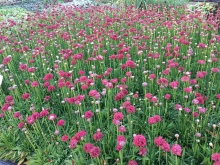
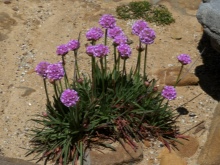
How to plant?
Armeria is usually grown using seedlings or from seeds, sowing planting material directly into open ground. In this case, the seedling method is the most effective. Planting seeds should be carried out in late February or early March.
For to plant an armeria seedling method, you need to perform a number of activities.
- The first thing to do is to prepare the seed. For this, the seeds are carefully selected and stored in the refrigerator for 7 days. Then they are dipped into warm water and begin to prepare the container and soil. Seeds can be sown both in peat pots and in boxes or containers, filling them with a special soil mixture.
- Further, the seeds are deepened into the soil by no more than 0.5 cm. Then transfer the containers to a warm, well-lit place for germination. After about 2 weeks, the first shoots will appear, on each seedling you can see 2-3 leaves. For them, you need to create a greenhouse environment and constantly moisten the substrate.
- Everything ends with planting seedlings in open ground (after preliminary preparation of the site in the garden). The soil should be well loosened and free of lime, you can add organic fertilizers to it. Seedlings are planted in pits so that the root collar remains slightly on the surface. For mass planting, a distance of 30-40 cm should be maintained between seedlings.
After this, the seedlings must be properly cared for, namely: water in a timely manner and ensure that a dry crust does not appear on the surface of the earth, it will prevent air from entering the root system.

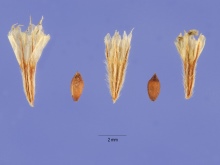
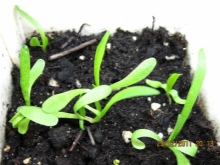
For the southern regions, planting armeria from seeds is best suited; in the wild, the flower reproduces well by self-sowing. It is advisable to sow seeds in early spring or before winter. Late sowing is characterized by greater efficiency, since during wintering the seeds undergo natural stratification, and in the spring they are guaranteed to give strong and friendly shoots.
If this is done in the spring, then the seeds are recommended to be additionally prepared and treated with growth stimulants. It is recommended to sow armeria on slopes, hills and hills.
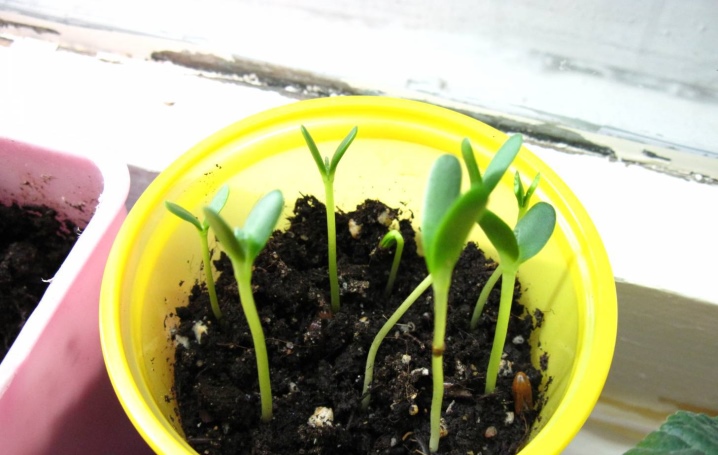
How to take care of it properly?
Caring for an army is very simple. The main thing is to apply fertilizers in a timely manner, water and clean the area from weeds. It is also important to transplant the plant to another place every 5 years, dividing it into parts. This is necessary so that it does not lose its decorative effect and pleases every season with abundant flowering.
Watering
Armeria has increased drought tolerance, so it does not need frequent watering. It is necessary to carry out "water procedures" only for lightly moistening the soil, since the flower may die due to stagnant water. In rainy summers, drainage trenches should be made around the bushes - they will ensure the flow of water and save the roots from flooding.
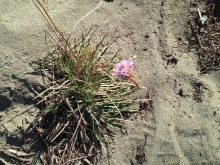
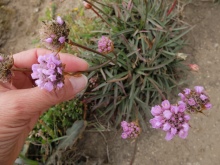

Top dressing
Despite the fact that armeria grows well on poor soils, it is still recommended to feed it, since due to a lack of minerals it will begin to bloom poorly. It is advisable to apply top dressing several times a season, namely, during the growing season and in autumn. Liquid mineral mixtures are well suited as fertilizers; they are diluted with water and introduced into the soil instead of watering.
Fertilization can be dispensed with only when the shrub grows in areas with loamy or peaty soil, in which all the nutrients are already contained.
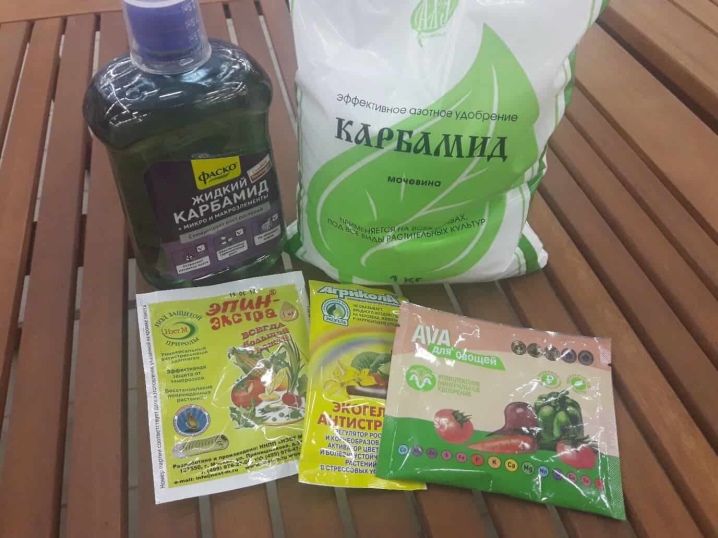
Pruning
Armeria care also includes periodic pruning, which is usually done after the flowering period. Pruning must be done with a secateurs. Such a procedure allows the shrub not only to acquire a neat appearance, but also to fill up with strength before flowering next year. In addition, damaged and dry leaves must be removed in the fall.

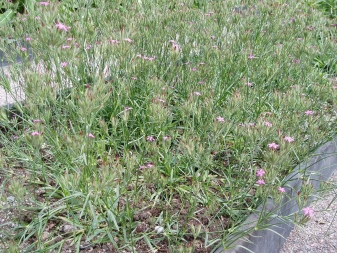
Wintering
Armeria is classified as a plant that is highly resistant to frost. Therefore, it is not necessary to cover it for the winter. The only exception is turfy armeria, which must be covered with non-woven material, dry peat or spruce branches. If there are forecasts that the winter will be with little snow, the shrub will not hurt to cover.
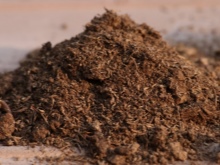
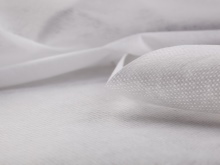
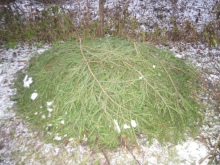
Reproduction methods
This perennial is very popular with all gardeners, since it is not only highly decorative, but also easy to grow. Having planted a flower once, you can enjoy its beauty for decades. Armeria reproduces in several ways, in addition to seeds and seedlings, which were already discussed above.
- Cuttings. This procedure can be performed at any time during the growing season. To do this, you need to separate the root rosette and sprinkle it with a layer of soil. If the air temperature is low, then it is recommended to additionally cover the cuttings with a glass jar, thereby creating a greenhouse effect.
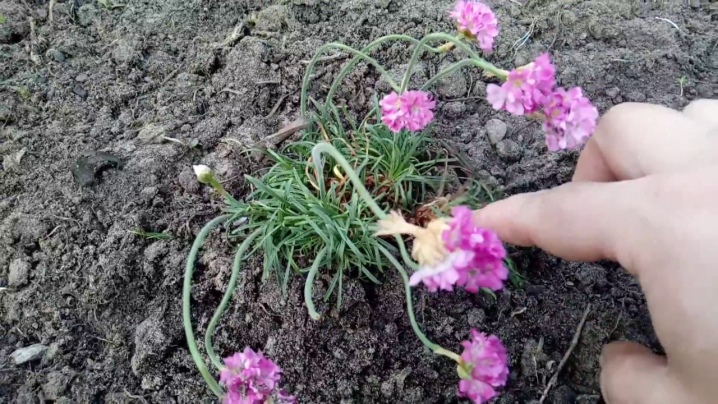
- By dividing the bush. This propagation method is suitable for a plant that has already reached 3 years of age and requires rejuvenation. In autumn or spring, the bush is carefully dug up and divided into several equal parts, removing the stems and damaged roots. Then they prepare the soil on the site, digging a separate hole for each seedling. They need to be dug in at a distance of 30 cm from each other.
Flowering with this type of reproduction begins, as a rule, in the second year. If you divide the bush in the spring, then there is a chance that it will delight you with its beauty closer to the autumn of the same year.

The method of propagation by seeds is usually chosen by experienced gardeners, since you need to know the rules for sowing and caring for seedlings. Seeds can be sown in open ground or in pots, followed by transplanting seedlings. The seed can be harvested by yourself from ripe bolls or purchased at a specialized store. Moreover, the latter option is more reliable, since self-collected seeds must be able to properly clean, select and process.

Diseases and pests
All types of armeria are highly resistant to insects and diseases. Most often, problems with the cultivation of perennials arise due to improper care. So, excessive watering can provoke the development of rot on the roots of the plant, which is accompanied by the appearance of spotting on the leaves. In cases like this experts recommend digging out the shrub and removing the damaged part of it, treating healthy roots with a fungicide and replanting the perennial to a new place.
As for pests, mainly armeria suffers from aphids, which feeds on the sap of the foliage and dries it out.The death of a plant can be avoided by prophylactic treatment of the trunk and foliage with drugs such as Inta-Vir and Kinmix. The procedure must be repeated in the spring and before flowering.
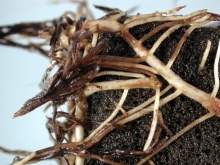
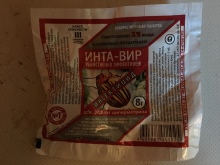

Use in landscape design
Armeria is considered one of the most beautiful and colorful ornamental plants. It is ideal for decorating garden areas. As a rule, perennials are planted in flower beds, borders and alpine hills, creating interesting compositions in landscape design.
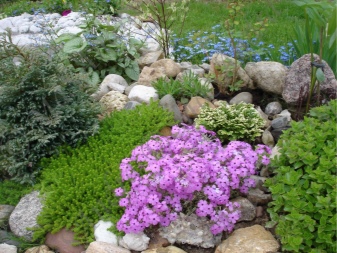
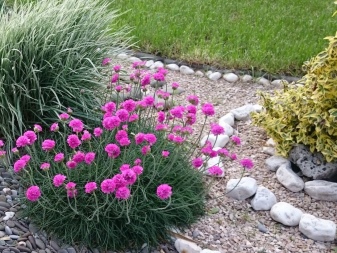
If you plant an armeria densely, you can get a solid carpet, which, during flowering, will delight you not only with bright colors, but also with a pleasant aroma. On flower beds, Armeria is best planted with thyme, bells and phlox. She will be able to perform a decorative role even in winter, since her foliage is evergreen.
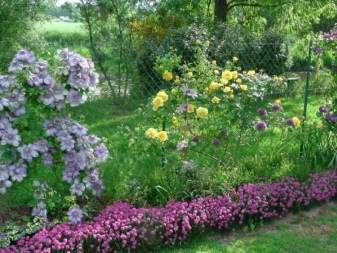

An interesting solution will also be the planting of a perennial where compositions from natural stone are laid out. If the area of the site allows, and there is a small pond on it, the armeria will take a worthy place next to it. These colorful shrubs also look gorgeous against the backdrop of wooden arbors with vertical gardening.
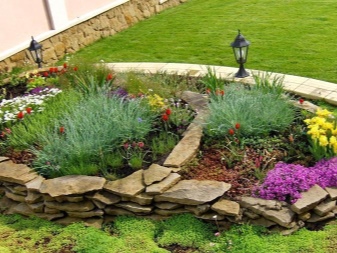
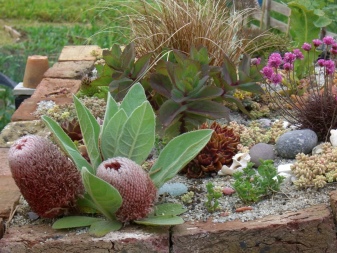
The following video will tell you about the features of the autumn planting of armeria.







































































































The comment was sent successfully.